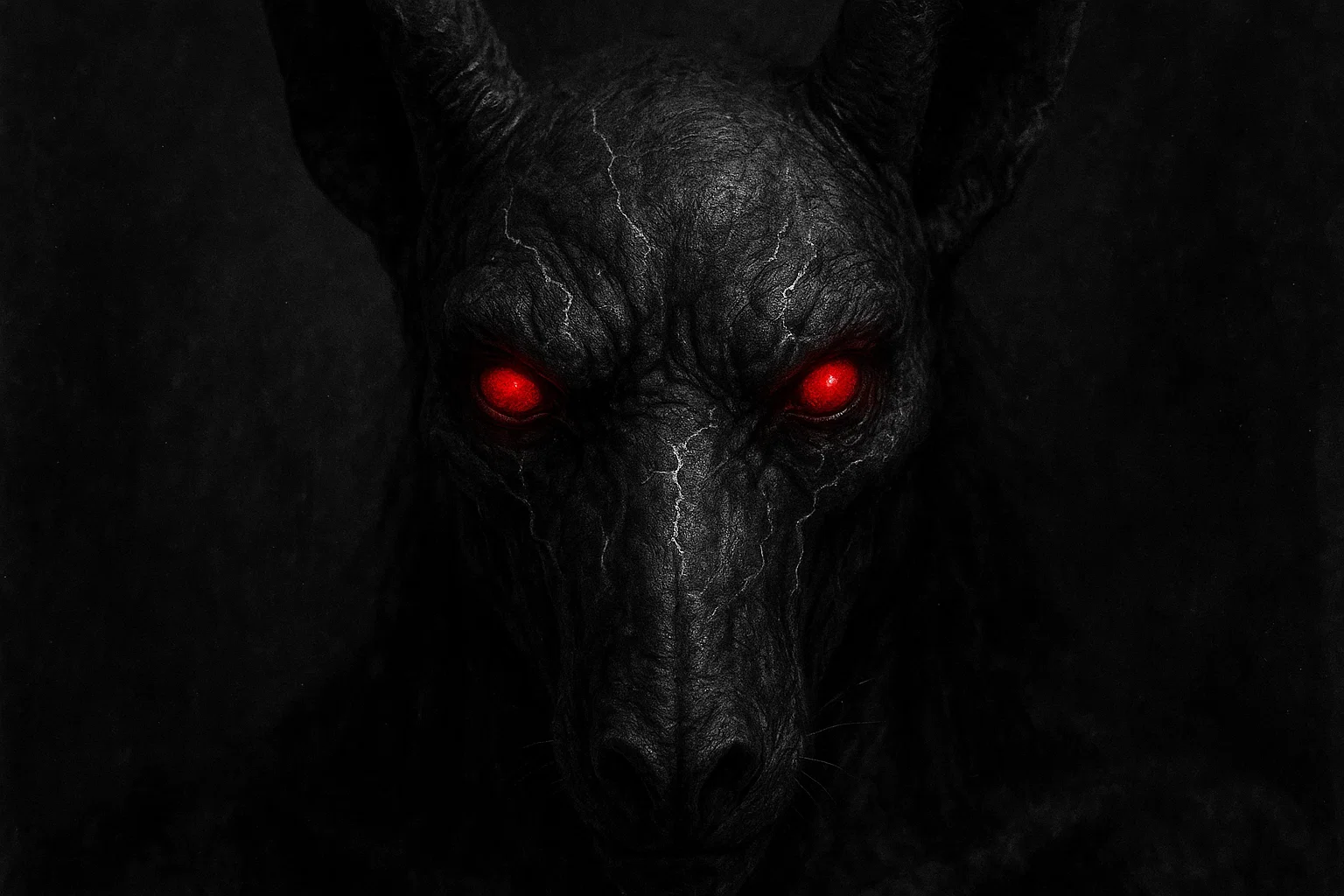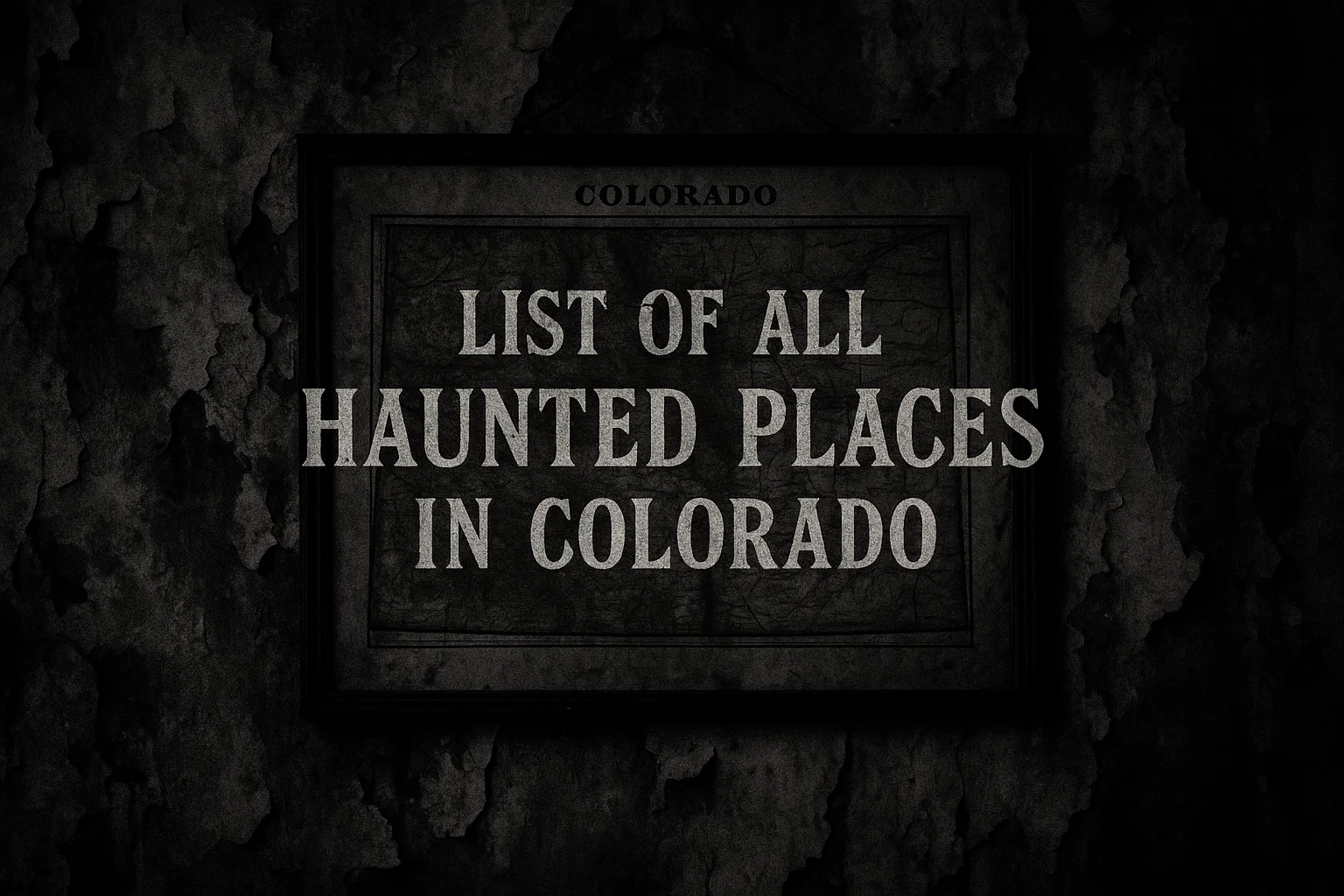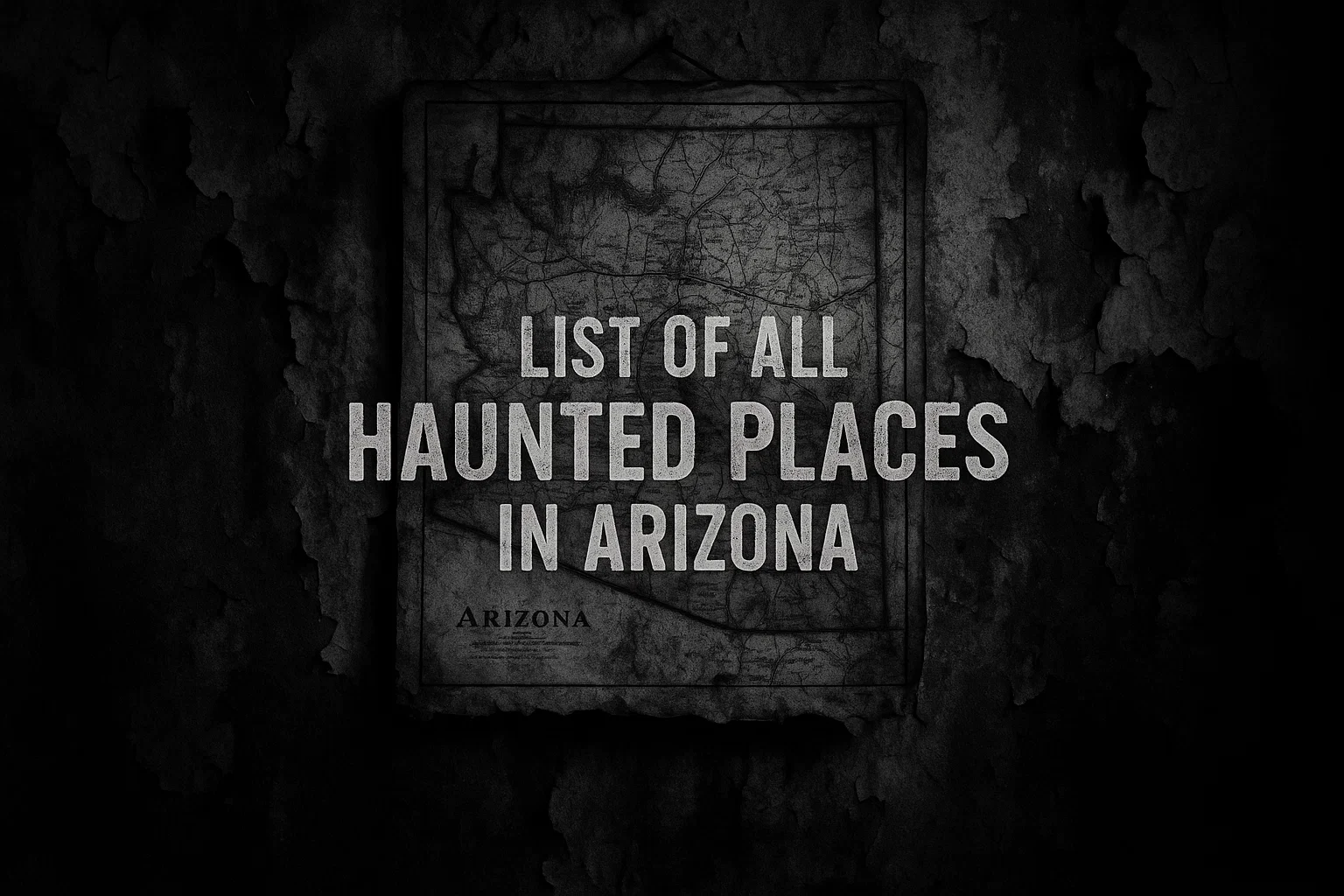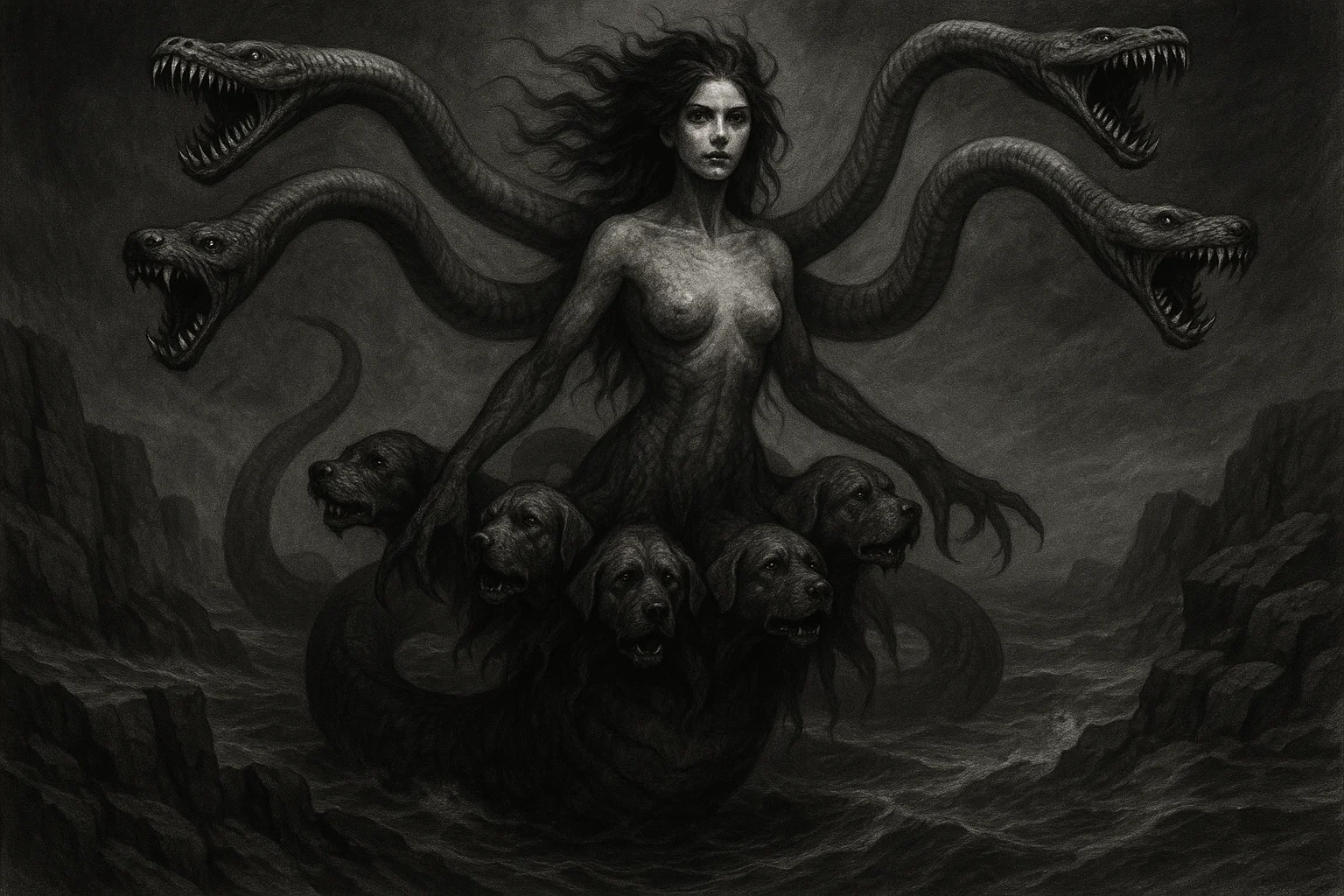In the blistering wastelands of ancient Egypt, where sandstorms swallow civilizations and betrayal festers like an open wound, Seth rises as the ultimate harbinger of disorder and malevolent ambition.
Known across millennia as the Egyptian chaos god, this infernal entity embodies the relentless fury of deserts, the savagery of warfare, and the seductive whispers of power that drag souls into eternal ruin.
From his treacherous slaying of kin to his dominion over tempests that ravage the Nile’s fertile embrace, Seth lures the unwary with visions of unchallenged rule, only to unleash a torrent of destruction that mirrors the barren red land he commands.
Yet the lore of Seth extends far beyond these shadowed origins, weaving through demonology’s darkest threads into global myths of rebellion and cosmic upheaval. As the demon Seth in later grimoires and esoteric traditions, he tempts with brute strength and cunning deceit, his name echoing in rituals where summoners risk annihilation for fleeting dominance.
Summary
Key Information
| Attribute | Details |
|---|---|
| Name | Set, Seth, Sutekh, Seteh, Sut, Setesh, Sit, Suty, Setan, Seth Merksamer |
| Title | God of Chaos, God of Deserts, God of Storms, God of Disorder, God of Violence, God of Foreigners, Lord of the Red Land, Ruler of the South, Powerful One of Thebes, God of War, Nefarious Demon of Death and Evil, Prince of Darkness, Usurper of Thrones |
| Gender | Male |
| Role | Betrayer and slayer of kin, instigator of cosmic discord, tempter through raw power and societal upheaval, embodiment of destructive foreign influence and brutal conquest |
| Hierarchy | In primordial Egyptian pantheons, a major adversarial deity; in demonological frameworks, a high-ranking infernal prince of chaos, subordinate only to supreme abyssal overlords like the ultimate tempter of pride |
| Servitors | Chaotic beasts and lesser storm spirits in myths; in demonology, commands legions of desert wraiths, war fiends, and entities of drought and famine |
| Superior Demon | None in core myths; in syncretic demonology, aligned under archetypal lords of primordial evil such as the fallen light-bearer or the adversary of divine order |
| Powers | Mastery over sandstorms and droughts that desiccate lands, incitement of wars and betrayals, superhuman strength for rending foes, potent curses of infertility and impotence, shape-shifting into beasts of terror, binding of greater serpentine horrors through violent force |
| Appearance | Hybrid abomination with the head of the enigmatic Set animal—curving snout like an anteater, squared erect ears, forked tail with tufts; often red-skinned or donkey-headed in demonized forms, clad in warrior garb stained with the blood of the slain |
| Etymology | Likely from ancient Egyptian stẖ or swtẖ, evoking “overmastering,” “instability,” or “dazzling terror”; pseudo-etymologies link to “turning back” chaos or “overpowering” destruction |
| Associated Figures | Osiris (betrayed brother and victim), Horus (eternal rival and avenger), Isis (cunning adversary who thwarts his schemes), Nephthys (consort in twisted unions), Anubis (disputed offspring from illicit trysts), Ra (forced ally against mutual foes), Apep (serpentine arch-enemy he spears in nightly abyssal wars) |
| Weaknesses | Overcome by falcon-eyed vengeance and restorative rites, bound by iron fetters symbolizing unyielding justice, emasculated in mythic duels losing virility, repelled by harmonious invocations of order and fertility |
| Opposing Angel/Saint | Horus as the divine avenger of equilibrium; in Judeo-Christian overlays, Archangel Michael as the celestial warrior against chaotic rebellion |
| Equipment/Tools | Was-sceptre of dominion twisted into a weapon of upheaval, jagged spear for impaling cosmic serpents, iron chains forged in infernal fires to restrain devoured light, crimson-tipped arrows of drought and discord |
| Pantheon | Ancient Egyptian pantheon, later syncretized into Greco-Roman infernal grimoires, Canaanite storm cults, and broader demonology traditions |
Etymology
The etymology of Seth demon plunges into the arcane depths of ancient Egyptian linguistics, where his name emerges as a phonetic enigma laced with connotations of terror and subversion.
Pronounced approximately as sūtiẖ or stẖ in hieroglyphic script—rendered as a twisted arrow or animal spine topped by a jackal-like form—the term defies straightforward translation, much like the Egyptian chaos god himself.
Scholars posit roots in words evoking “to dazzle” or “to separate,” but more potently, it aligns with stẖ meaning “to instigate” or “to confound,” capturing Seth demon‘s essence as the instigator of cosmic fractures and familial betrayals.
This linguistic ambiguity fueled pseudo-etymologies in later eras, amplifying Seth demonology. Plutarch, in his Greco-Roman lens, interpreted Seth as “the overmastering” or “overpowering,” drawing from Egyptian traditions that portrayed him as an unstoppable force of “turning back” order into primordial void.
Coptic evolutions to Sēt preserved this dread, while Semitic influences during Hyksos rule morphed it into Sutekh, blending with storm-lord titles like Baal’s, underscoring Seth‘s syncretic spread as a demon of foreign strife. In demonology texts, such as echoes in the Greek Magical Papyri, his name invokes “overpassing” boundaries, symbolizing invasions that shatter divine harmony.
Delving deeper, the name’s hieroglyphic components—a knife-like stroke amid beastly curves—mirror Seth‘s iconography, where script and myth entwine to denote instability. Early predynastic inscriptions from Naqada (c. 3200 BCE) hint at s-w-t variants linked to “desert arrow,” evoking his role as the piercing wind of the red land. By the Middle Kingdom, amid rising Osirian cults, etymological puns tied Seth to sḫt, “to destroy,” reinforcing his demonized arc.
These layers not only shaped rituals—where uttering Sutekh summoned gales of wrath—but also permeated broader Egyptian demonology, influencing how later occultists viewed him as a phonetic key to unlocking chaotic energies. In essence, Seth‘s name is a verbal curse, eternally whispering of subversion and the fragility of maat, the cosmic order he eternally assaults.
You May Also Like: The Demon Ammit: Crocodile-Headed Devourer of the Dead
What Does Seth Look Like?
The demon Seth manifests as a grotesque fusion of predatory ferocity and otherworldly aberration, his form a deliberate affront to the harmonious ideals of ancient Egyptian iconography.
Central to his visage is the head of the Set animal, an unclassifiable beast with a elongated, downward-curving snout reminiscent of an aardvark or anteater, designed for rooting out hidden weaknesses in foes.
Topped by rigid, square-tipped ears that twitch like radar for impending discord, and crowned with a rigid mane of unkempt fur, this head gleams with eyes of molten red, piercing through illusions to expose the vulnerabilities Seth exploits for corruption.
His body, often humanoid yet beastly, sprawls with a lean, muscular frame covered in arid, crimson-hued skin evoking sun-baked blood and desert rust. A forked tail, tufted at the ends like a scorpion’s lash, whips with erratic fury, symbolizing the bifurcated paths of temptation he offers—power or perdition.
In demonized depictions from Late Period papyri, Seth assumes a donkey-headed guise, ears flopping in mocking parody of equine nobility, underscoring his role as a beast of burden for infernal labors. Clad in tattered kilts of shadow-woven linen or armored in scales forged from sandstorm grit, he wields a jagged was-sceptre that doubles as a flail for lashing souls into submission.
Variations abound: in some grimoires, demon Seth shape-shifts into a towering hippopotamus of submerged rage, jaws agape to swallow light, or a serpentine horror coiling like his foe Apep, fangs dripping venomous curses.
These traits— the elongated snout for devouring secrets, the tufted tail for ensnaring the unwary—serve not mere aesthetics but as totems of Egyptian demonology, where every curve and claw tempts the viewer toward the abyss of chaos.
Historical and Mythological Background
The origins of Seth, the quintessential Egyptian chaos god, trace back to the predynastic haze of Upper Egypt around 4000 BCE, emerging from the sun-scorched oases of Nubt (Ombos) near Naqada, a necropolis teeming with early funerary rites.
As a local deity of the arid red land—the barren deserts flanking the fertile black land of the Nile—Seth personified the unpredictable fury of sand-laden gales and foreign incursions that threatened settled life. Predynastic palettes, like the Two Dog Palette (c. 3300 BCE), may depict him as a standards-bearing figure amid chaotic beasts, hinting at his role in tribal skirmishes predating unification.
By the Early Dynastic Period (c. 3100 BCE), Pharaoh Seth-Peribsen boldly adopted a Seth serekh, elevating him as patron of southern strength against Horus’s northern falcon, symbolizing a mythic schism resolved only in later pharaonic ideology.
Seth‘s demonological evolution is intertwined with Egypt’s geopolitical tumults. During the Second Intermediate Period (c. 1650–1550 BCE), Hyksos invaders from the Levant syncretized him with Baal, their storm-lord, dubbing him Seth-Baal and erecting temples at Avaris. This foreign embrace cast Seth as a god of conquest, his cult surging under Ramesside pharaohs like Seti I (r. 1290–1279 BCE), who named themselves after him for martial prowess.
Yet, following the post-New Kingdom conquests by Libyans, Nubians, Assyrians, and Persians (c. 1070–332 BCE), he was vilified as an emblem of invasion, with his images being effaced from monuments and equated with Apep’s serpentine malice. In the Greco-Roman era, Plutarch’s On Isis and Osiris (c. 100 CE) fused him with Typhon, the Greek multi-headed storm giant, cementing Seth‘s place in Western demonology as a chaotic adversary.
Globally, Seth resonates with deities of upheaval: the Hittite Teshub, a thunder-hurling warrior akin to Seth’s spear-wielding Apep-slayer; the Canaanite Baal-Hadad, whose bull-horned tempests mirror Seth-Baal syncretism; the Norse Loki, the shape-shifting betrayer whose familial murders echo Osiricide; and even the Zoroastrian Angra Mainyu, the destructive spirit opposing cosmic order.
In Judeo-Christian overlays, speculative links tie Seth to Satan via shared motifs of envy-driven fratricide and desert temptations, as in the Book of Job’s Behemoth parallels. These connections underscore Seth‘s archetype as the necessary evil in dualistic cosmologies, a force of disruption essential yet abhorrent.
You May Also Like: Utukku: The Faceless Shadow Demon of Mesopotamia
The Murder of Osiris
The foundational atrocity defining Seth as the arch-betrayer unfolds in the Osiris myth, a tale fragmented across Pyramid Texts (c. 2400 BCE), Coffin Texts (c. 2000 BCE), and Plutarch’s retelling, symbolizing the eternal clash between fertility and desolation.
Osiris, the verdant king who civilized Egypt with agriculture and laws, ruled harmoniously with sister-wife Isis, their union a beacon of maat. Seth, seething with envy over his brother’s throne—perhaps fueled by his own barren domain—hatched a plot of unparalleled treachery during a grand feast honoring the gods.
Disguising an ornate chest as a game of measurement, Seth declared it a gift for whoever fit perfectly within, luring Osiris with flattery. As the king reclined inside, Seth and 72 conspirators—lesser desert fiends and foreign allies—sealed the lid with molten lead and sacred nails, then hurled it into the Nile’s surging waters.
The chest drifted to Byblos, lodging in a tamarisk tree that grew around it, but Seth demon‘s malice deepened: discovering the corpse washed ashore, he hacked Osiris into 14 pieces (one for each lunar phase, per some accounts), scattering them across Egypt’s nomes to thwart resurrection and curse the land with infertility.
Isis, with Nephthys’s aid—Seth‘s own consort, who betrayed him out of lingering loyalty—embarked on a grief-stricken quest, recovering all but the phallus, devoured by a Nile fish (oxyrhynchus or perch, spawning taboo cults). Using incantations from Thoth, Isis reassembled the body, fashioning a golden phallus for the rite, and briefly revived Osiris long enough to conceive Horus in the marshes of Chemmis.
Osiris descended to the Duat as lord of the dead, his resurrection seeding the underworld’s judgment halls, but Seth‘s act birthed an unending vendetta. This myth, etched in temple walls like Dendera and Philae, not only demonized Seth as a fratricidal usurper but ritualized annual reenactments in Abydos, where effigies of the scattered limbs were buried to reclaim fertility from chaos.
The Contendings of Horus and Seth
The protracted saga of The Contendings of Horus and Seth, preserved in the Chester Beatty Papyrus I (c. 1180 BCE, Twentieth Dynasty), transforms familial murder into an 80-year legal farce and visceral melee, adjudicated by the Ennead at Heliopolis under Ra’s weary gaze.
Horus, falcon-headed avenger raised in secrecy by Isis amid Delta swamps teeming with scorpions and serpents, claims Osiris’s throne as rightful heir, embodying pharaonic renewal. Seth, now self-crowned king, asserts primacy through brute inheritance, his court a den of jackals and storms where justice bends to violence.
Ra, favoring Seth‘s vigor—perhaps echoing his own senility—prolongs the tribunal with absurd trials, revealing the gods’ corruption and Seth‘s manipulative prowess. First, a boat race on stone vessels: Horus cheats with a cedar craft disguised as stone, sinking Seth‘s, who retaliates by shape-shifting into a hippopotamus to ram it, only for the Ennead to halt the fray.
Sexual intrigue escalates when Seth, in leonine form, assaults Horus during a drunken revel, spilling seed to dominate and humiliate; Horus counters by capturing it in his hands, alerting Isis, who mashes it into lettuce—Seth‘s favored aphrodisiac—and feeds it back, impregnating him with a golden disc sprouting from his head like a solar mockery.
Mutilations follow: Seth gouges Horus’s left eye, symbolizing the moon’s waxing-wane, while Horus severs Seth‘s testicles, sapping his potency and echoing Osiris’s violation. Thoth restores the Eye (Wadjet amulet’s genesis), but the gods dither, bribed by Seth demon‘s oaths and threats.
Isis, disguised as a maiden, tricks Seth into affirming mercy for the weak, undermining his tyranny. Desperate, Ra dispatches messengers to the Duat; Osiris’s furious missive—threatening to unleash the dead upon the negligent Ennead—forces judgment: Horus crowned, Seth demoted to Ra’s storm-bringer, spearing Apep nightly.
This satirical epic, blending humor with horror, underscores Seth‘s enduring threat, ritualized in kingship coronations where pharaohs unified Horus-Seth aspects.
You May Also Like: Who Is Hanbi? The Formless Demon of Ancient Mesopotamia
Protector Against Apep
Amid Seth‘s litany of betrayals, a paradoxical thread casts him as Ra’s reluctant sentinel against Apep, the colossal chaos serpent embodying non-existence, detailed in the Book of the Amduat (c. 1500 BCE) and Book of Gates.
Each dusk, as Ra’s solar barque navigates the Duat’s twelve caverns—realms of serpents, fire, and shadow—Apep coils in wait, a behemoth 16 meters long with scales of obsidian and breath that eclipses stars, seeking to devour the sun and plunge creation into the void.
Seth demon, chained to the prow by divine decree—his own iron fetters a mythic irony—stands resolute, spear in one hand, harpoon in the other, his red form silhouetted against the barque’s glow. With roars shaking the underworld’s pillars, he pierces Apep’s maw, forcing regurgitation of swallowed light, or hacks at coils binding the boat, aided by Bastet, Sekhmet, and Mehen’s serpentine shield.
Spells from Thoth bind the fiend with wax images melted in dawn’s fire, but Seth‘s raw fury proves decisive; without his intervention, as Pyramid Texts warn, “darkness would devour the justified.”
This nocturnal vigil, celebrated in epagomenal days marking the calendar’s end, tempers Seth‘s villainy, positioning him as chaos’s necessary counter to greater oblivion. Late Period variants at Hibis Temple (c. 400 BCE) even falconize his head, blurring lines with Horus, yet underscore his expendable ferocity— a demon-god leashed for cosmic utility, his victories ensuring dawn’s fragile return.
Historical Mentions
| Text/Grimoire | Year | Description | Excerpt |
|---|---|---|---|
| Pyramid Texts | c. 2400 BCE | Funerary incantations portraying Seth as a disruptive force in royal ascensions, tied to southern upheavals and oaths of vengeance | “Set is always mentioned among the great deities… The departed one is called the inheritor of Set (Suti), and is purified by both Hor and Set.” |
| Book of the Dead | c. 1550 BCE | Afterlife spells invoking the demon‘s binding of serpents, yet cursing his chaotic intrusions on the justified dead | “They use Set to circumvent it [the serpent Apophis]; they use him to throw an iron chain around its neck, to make it vomit all that it has swallowed.” |
| Contendings of Horus and Seth | c. 1186–1069 BCE | Satirical narrative of Seth‘s trials and mutilations, emphasizing his lechery and defeat in kingship disputes | “Set asks to have sex with Horus, who agrees on the condition that Set will give Horus some of his strength.” |
| On Isis and Osiris (Plutarch) | c. 100 CE | Greco-Roman demonization framing the demon as Typhon, a convulsive evil propitiated through insults and sacrifices | “The power of Typhon, although dimmed and crushed, is still in its last agonies and convulsions. The Egyptians occasionally humiliate and insult him at certain festivals. They nevertheless propitiate and soothe him by means of certain sacrifices.” |
| History of the Devil (Paul Carus) | 1900 CE | Esoteric analysis casting Seth as archetypal infernal prince, feared for his wrathful dominion | “SET, OR SETH, whom the Greeks called Typhon, the nefarious demon of death and evil in Egyptian mythology, is characterised as ‘a strong god (a-pahuti), whose anger is to be feared.'” |
| Greek Magical Papyri | c. 400 CE | Occult spells invoking Seth for curses and protections, blending him with Baal-like storm invocations | “I call upon you, the greatest god, eternal lord, world ruler, Seth-Typhon, who is before and behind…” (PGM IV. 154-285) |
Seth’s Powers and Abilities
Seth, the Egyptian demon par excellence, wields an arsenal of cataclysmic forces rooted in the desiccated fury of the red land, far surpassing generic infernal trickery with targeted assaults on stability and vitality.
His powers manifest as extensions of his chaotic essence: summoning haboobs—towering dust walls that blind armies and choke rivers—Seth erodes societal bonds, tempting leaders with visions of conquest amid the haze, only to leave them isolated in paranoia. Unlike shadowy whisperers, he corrupts through visceral spectacles, amplifying mortal hubris until betrayals cascade like Nile floods turned toxic.
In demonology, Seth‘s abilities draw from predynastic storm cults, evolving into grimoires where he grants summoners unnatural endurance for vendettas, but at the cost of fertility’s withering—crops fail, lineages end. He shape-shifts into tempests, infiltrating dreams as red-eyed beasts to sow seeds of discord, turning allies into assassins.
His curses invoke impotence, mirroring his mythic emasculation, stripping foes of legacy while promising virile dominion to the desperate. Against greater evils, Seth‘s spear-thrusts bind abyssal serpents, a double-edged boon that lures the pious into dependency on his violence.
This specificity in Seth’s demonology distinguishes him: where lesser fiends peddle illusions, he engineers ecological and psychological apocalypses, corrupting by making chaos feel like empowerment. Victims, ensnared by promises of unyielding strength, awaken to wastelands of their own making—families sundered, empires crumbled—eternal testaments to Seth‘s seductive ruin.
You May Also Like: Proserpina: Queen of the Underworld’s Dark Secrets
Powers and Abilities Breakdown
| Power/Ability | Description | Source | How It Tempts/Corrupts Humans |
|---|---|---|---|
| Storm Manipulation | Withers fields and dries breasts, starving multitudes, while enriching hoarders | Book of the Dead | Whispers of battlefield supremacy, drawing warlords into genocidal campaigns that orphan generations |
| Chaos Induction | Sows discord via whispers or illusions, fracturing alliances and inciting riots from subtle jealousies | Osiris Myth | Fuels sibling rivalries into murders, promising thrones built on kin’s graves but yielding paranoid isolation |
| Immense Strength | Rends divine flesh with bare hands, hurling boulders like pebbles or toppling obelisks in fits of rage | Contendings | Grants gladiatorial might to the ambitious, corrupting athletes and tyrants into bloodthirsty despots |
| Sexual Potency Curse | Inverts fertility, cursing wombs barren or inflaming lusts into obsessive perversions | Horus Conflict | Seduces with illusory passions, twisting desires into familial taboos and dynastic collapses |
| Serpent Binding | Harpoons cosmic beasts like Apep, chaining their coils but risking their venomous backlash | Amduat | Offers “protection” pacts to the fearful, binding souls in eternal debt to his volatile guardianship |
| Shape-Shifting Deception | Assumes forms of beasts or kin to infiltrate sanctuaries, devouring trust from within | Pyramid Texts | Mimics loved ones in visions, luring the bereaved into pacts that erode sanity and spawn hauntings |
| Drought Invocation | Withers fields and dries breasts, starving multitudes while enriching hoarders | Hyksos Syncretism | Tempts merchants with monopolies amid famine, breeding greed that devours communities whole |
How to Counter Seth’s Powers
Confronting Seth‘s onslaughts requires invoking the anchors of maat, the unyielding scaffold of order that this Egyptian chaos god despises. Foremost, the Eye of Horus—crafted as a blue-green faience amulet etched with healing spells—deflects his sandstorms, its lunar restoration mirroring the mythic eye’s rebirth to blind his red glare. Worn during invocations or buried at thresholds, it channels Thoth’s wisdom, turning gales back upon summoners as purifying winds.
Iron, the metal of his mythic chains, forms talismans: nails driven into doorframes or spears tempered in Nile silt bind Seth‘s manifestations, echoing Apep’s nocturnal fetters. Recite Pyramid Text utterances like “Horus avenges his father,” visualizing falcon wings shredding his donkey guise, to shatter shape-shifting illusions.
For curses of barrenness, Isis’s knot-tying rites—red thread looped seven times around wombs or fields—restore potency, drowning his impotence in floods of renewal.
Ritual combats, as in Edfu Temple reenactments, employ lettuce effigies doused in vinegar to mock and dissolve his lechery, while communal feasts under full moons starve his drought by affirming abundance.
In demonology adaptations, Archangel Michael’s sword sigil, inscribed in salt circles, repels his legions, forcing retreat to the red land. These countermeasures, drawn from millennia of resistance, demand unwavering unity—Seth thrives on division, crumbling before collective resolve.
You May Also Like: The Strange Hodag Monster: Wisconsin’s Fearsome Cryptid
Seth’s Role in the Hierarchy of Hell
In the stratified abyss of demonology, Seth ascends as a mid-tier infernal sovereign, a prince of the eastern quadrants where deserts bleed into hellfire pits, commanding legions of dust devils and war shades under the tenuous oversight of pride’s emperor.
Unlike Goetic dukes bound to Solomon’s brass vessel, Seth‘s rank draws from Egyptian cosmogonies, positioning him as Ra’s exiled enforcer demoted to Duat’s fringes—yet in syncretic grimoires like the Grand Grimoire (c. 1522 CE), he parallels Baal as a storm duke, outranking famine imps but yielding to the sevenfold princes of sin.
His infernal station reflects pharaonic flux: predynastic chieftain of oases, Hyksos-favored general under Baal’s banner, Ramesside vanguard against Apep, only to plummet post-Persian eras as Typhon, a convulsive lieutenant to Leviathan’s envious coils.
Seth oversees the “Order of the Red Spear,” a cadre of 66 legions specializing in border incursions—tempting nomads with oases of illusion, inciting migrations that topple thrones. Subordinates like Maga, his crocodile spawn, patrol Nile-analogous Styx tributaries, while he clashes with Horus-analogues like Asmodel, dominion of equilibrium.
Relations fracture along mythic lines: eternal feud with Osiris’s underworld bureaucracy breeds soul-thefts, yet pragmatic truces with Beelzebub’s flies for plague-ridden alliances.
In Binsfeld’s classification (1589), Seth aligns with wrath’s vanguard, his outbursts fueling Satan’s adversarial campaigns, but whispers of autonomy—worshipped solo in oases—mark him as a “lonely” chaos node, per Assmann, vulnerable to isolation by higher schemers.
This precarious perch in hell’s pyramid underscores Seth‘s peril: a necessary disruptor, ever one betrayal from demotion to Apep’s unchained kin.
Astrological Associations and Symbolism
Seth‘s celestial tether anchors in Mercury’s mercurial volatility, the swift messenger whose retrograde storms echo his desert whirlwinds, ideal for Egyptian demonology rituals timed to wingéd chaos.
As ruler of Aries’ martial charge, he ignites equinoctial wars, his ram-horned fury clashing with Taurus’ stability, while Scorpio’s sting amplifies his scorpion-tailed betrayals. Elemental dominion spans fire’s scorching blaze—igniting Hyksos thunderbolts—and air’s howling voids, birthing haboobs that symbolize the breath of discord.
Numerically, four governs Seth, the cardinal directions he upends, or seven for the scattered Osiris limbs, rituals invoking his defeat on epagomenal nights.
Red, the blood of the red land and Seth’s skin, dyes his sigils for temptation spells, contrasted by black obsidian’s void-like absorption.
Iron, unyielding as his chains, forges amulets against him, while red jasper—mined from Edfu quarries—channels his potency for war charms, its vibrations humming with Apep-slaying echoes.
In broader symbolism, Seth evokes the donkey’s stubborn vice, lettuce’s ironic fertility curse, and the sha beast’s unnamable terror, archetypes in chaos god lore.
These ties, woven into predynastic star-charts, empowered priests to harness or banish him, blending astrology with demonology for eclipses foretelling usurpations.
| Association Type | Details |
|---|---|
| Planet | Mercury (swift disruption), Mars (warlike fury) |
| Element | Fire (scorching tempests), Air (whirling voids) |
| Color | Red (blood-desert rage), Black (abyssal eclipse) |
| Metal | Iron (binding chains), Copper (storm-forged spears) |
| Stone/Crystal | Red Jasper (potency amplification), Obsidian (chaos absorption), Carnelian (warrior’s blood) |
| Number | 4 (cardinal upheavals), 7 (dismembered curses), 72 (conspirator legions) |
| Zodiac | Aries (aggressive conquest), Scorpio (venomous betrayal) |
| Direction | East (foreign invasions), South (red land dominion) |
You May Also Like: Bigfoot Sightings Across America: Full 50-State Guide
Seth’s Sigil
The sigil of Seth, absent in pharaonic purity but forged in Greco-Roman grimoires like the Greek Magical Papyri (c. 400 CE), amalgamates hieroglyphs into a labyrinthine emblem: a curving arrow piercing a squared ear, encircled by forked tails and crimson droplets, evoking the Set animal‘s predatory lunge.
Etched in red ochre on papyrus or branded into iron talismans, it serves as a vortex for summoning his tempests, where the central knot—mirroring Isis’s undone bonds—traps invoked energies in eternal strife. Modern occultists, drawing from Temple of Set revivals (1975 CE), adapt it with Baal’s bull horns, channeling Seth‘s syncretic storm-lord aspect for rituals of upheaval.
This glyph, pulsing with the red land‘s arid pulse, warns as much as it wields: gaze too long, and visions of Osiricide flood the mind, tempting the drawer into Seth demonology‘s grasp. In protective inversions, overlay it with Horus’s wedjat eye to shatter illusions, a dual sigil for banishing his incursions.
Associated Symbols and Offerings
| Symbol/Item | Association/Meaning | Use in Rituals |
|---|---|---|
| Set Animal | Hybrid terror of unnamable predation, piercing hidden frailties | Summoning focal for strength pacts, drawn in sand for war divinations |
| Donkey | Stubborn beast of vice and foreign derision, embodying unyielding malice | Scapegoat effigies burned to avert betrayals |
| Was-Sceptre | Crooked staff of dominion, twisted into a flail for lashing order | Anointed with oils for binding spells against rivals |
| Red Sand | Barren essence of the red land, transformative dust of erosion | Scattered in circles for drought curses or grounding chaotic visions |
| Iron Chain | Fetters of restraint, echoing Apep’s nocturnal bonds | Worn as amulets to counter shape-shifting deceptions |
| Lettuce | Bitter irony of inverted fertility, Seth‘s mythic aphrodisiac downfall | Vinegar-doused offerings to mock and dispel potency curses |
| Red Jasper | Blood-stone of warrior rage, amplifying destructive pulses | Held in meditations for spear-throwing invocations |
| Oryx Antelope | Desert phantom of elusive speed, symbolizing foreign incursions | Horns carved into spears for protection against invasions |
Comparison with Other Demons
| Demon | Role | Powers & Temptations | Appearance & Cultural Ties |
|---|---|---|---|
| Typhon | Greek storm-giant usurper | Earthquakes and volcanic fury tempting hubristic overthrows | Horned tempter in the wilderness, linked via Job’s Behemoth motifs |
| Apep | Egyptian void-serpent | Devours light, corrupting with eternal night and despair | Coiled obsidian behemoth, nightly rival in Duat barque battles |
| Baal | Canaanite storm-lord | Thunderbolts inciting tribal wars and fertility inversions | Bull-horned warrior, Hyksos ally in Avaris temples |
| Loki | Norse trickster-betrayer | Deceptions fueling Ragnarok, luring with false alliances | Shape-fluid fire giant, familial murderer in Baldr’s death |
| Satan | Biblical adversary of order | Tempts with prideful rebellion, spawning infernal hierarchies | Anguish and decay, tempting moral inversions |
| Lucifer | Fallen pride-prince | Enlightenment-through-fall, corrupting with knowledge of chaos | Radiant serpent to ashen lord, morning star eclipsed like Ra’s foe |
| Angra Mainyu | Zoroastrian evil spirit | Horned helm of clouds, Levantine cults influencing the Hyksos era | Smoky shadow-drake, eternal foe in cosmic good-evil wars |
| Teshub | Hittite thunder-god | Lightning spears against serpents, seducing warriors to excess | Axe-wielding on bull, eastern syncretism in Ramesside pacts |
| Hadad | Syrian rain-warrior | Floods turning to tempests, luring with bountiful illusions | Horned helm of clouds, Levantine cults influencing Hyksos era |
| Apophis | Chaos incarnation | Undermines renewal, corrupting with oblivion’s whisper | Giant uncoiling serpent, Amduat’s devoured sun in endless cycles |
You May Also Like: 10 Short Horror Stories You Should Never Read Alone
Conclusion
Seth, the indomitable Egyptian chaos god, endures as a spectral indictment of ambition’s corrosive bite, his myths a grim ledger of how unchecked envy devours the divine and mortal alike.
From predynastic sands where he first howled as desert scourge to demonological grimoires etching his sigil in blood-red ink, Seth exemplifies the infernal allure of power’s shadow—promising dominion over foes, yet delivering only the hollow echo of isolation amid ruins.
In demonology‘s vast tapestry, he stands not as a redeemable foil but as the unrelenting gale that tests maat‘s fragility, reminding us that chaos, though necessary, claims all who embrace it without restraint.
Yet in this abyssal mirror, humanity glimpses its own tempests: the betrayals born of jealousy, the wars waged for illusory crowns, the subtle erosions of unity that Seth masterfully exploits.
To confront him is to affirm order’s quiet victories—through Horus’s vigilant eye, Isis’s unyielding weave—forging resilience against the red land‘s encroaching thirst. As whispers of Seth demonology persist in modern occult shadows, his legacy cautions: in the heart’s hidden dunes, the storm-god lurks, ever ready to unleash what we dare not name.
Ultimately, Seth‘s saga transcends ancient Nile banks, infiltrating global lore as the archetype of disruption’s double blade. Whether spearing Apep’s coils or scattering Osiris’s limbs, he embodies the demon’s eternal gambit: tempt with fury’s forge, corrupt through victory’s venom, and revel in the fallout.
In studying this Egyptian demon, we arm against our inner voids, choosing harmony’s Nile over chaos’s endless waste.







